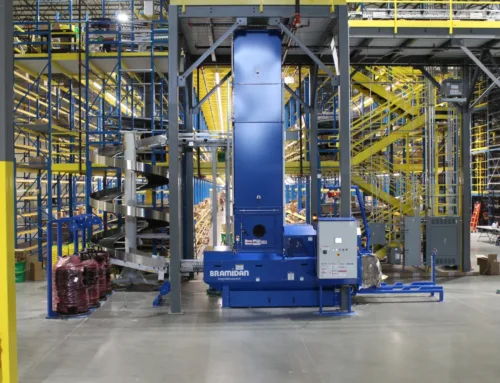
Are you struggling to effectively manage your company liquidation? Many organizations face challenges when planning their liquidation process, especially when it comes to maximizing cash recovery for lenders and stakeholders. This article will guide you through analyzing your business needs, developing a strategic liquidation plan, and choosing the right liquidation method. By reading this post, you’ll gain practical insights that will help streamline the liquidation process, ensuring a more organized and legally compliant approach. Let’s tackle the complexities of liquidation together and support your organization in achieving optimal results.
Analyze Your Business Needs for Liquidation Planning

To effectively plan your commercial liquidation definition, start by assessing your current inventory and assets with attention to their value. Identify any liabilities and outstanding debts accurately to understand your financial standing. Set clear objectives for the process and determine a realistic timeline. Engaging with stakeholders for their insights will ensure their adoption of the plan, while evaluating legal requirements will keep you compliant with insolvency regulations. For more information, visit our end2end logix homepage or contact us.
Assess Your Current Inventory and Assets Effectively
To assess your current inventory and assets effectively, begin by conducting a thorough accounting of all items, including their condition and market value. It’s essential to identify any liens against your assets, as these can affect your liquidation outcomes and should be addressed upfront. Utilize strong marketing materials that highlight key assets to attract potential buyers and ensure that your chosen liquidator has a clear understanding of their value, which will ultimately influence the fees you may incur during the process.
Identify Liabilities and Outstanding Debts Accurately
Accurately identifying your liabilities and outstanding debts is critical during voluntary liquidation. Begin by closely examining your financial statements to uncover all obligations, including loans, unpaid invoices, and any leased equipment. Understanding the net realizable value of your assets, such as inventory and equipment, will provide a clearer picture of your financial standing and help guide your liquidation strategy.
- Review financial statements for an accurate assessment of debts.
- Identify all liabilities, including loans and unpaid invoices.
- Evaluate the net realizable value of assets, such as inventory and equipment.
Set Clear Objectives for Your Liquidation Process
Setting clear objectives for your liquidation process is vital to achieving a successful outcome. Begin by defining what you hope to accomplish, whether it is to recover maximum value from assets, reduce liability exposure, or ensure an orderly resolution of your business affairs. Consider the implications of your decisions in relation to intellectual property and the requirements of the national court register to guarantee compliance with legal standards throughout the liquidation.
- Define the primary goals of the liquidation process.
- Address the recovery of asset value and liability reduction.
- Ensure compliance with the national court register and legal standards.
Determine the Timeline for Your Liquidation Strategy
Determining the timeline for your liquidation strategy is crucial for a smooth process. Assess your business circumstances to set a realistic timeline that allows for thorough inventory assessments, effective marketing of your assets, and legal compliance. Work closely with your commercial liquidation services team and consult with a lawyer to identify potential expenses, ensuring that you are prepared for each phase of liquidation.
- Assess your business circumstances for timeline establishment.
- Ensure thorough inventory assessments and effective asset marketing.
- Consult with your commercial liquidation services and a lawyer about potential expenses.
Consult With Stakeholders for Their Insights and Expectations
Engaging with stakeholders is a fundamental step in the liquidation planning process, as their insights and expectations can shape your strategy significantly. Gather input from key parties, such as employees, creditors, and investors, to ensure alignment with financial goals and compliance with accounting standards. This collaboration can help identify any interest in the assets and provide a clearer picture of the overall income to be expected through the liquidation, ultimately guiding your decisions and enhancing the value recovery process.
- Engage stakeholders to gather insights and expectations.
- Consider input from employees, creditors, and investors.
- Align financial goals with stakeholder interests.
- Identify opportunities to enhance income recovery.
- Ensuring compliance with accounting standards will facilitate the audit process.
Evaluate Any Legal Requirements for Commercial Liquidation
When planning for commercial liquidation, evaluating legal requirements is essential to ensure compliance throughout the process. Each entity must adhere to specific regulations and obtain necessary bonds that protect creditors and ensure due diligence. Engaging with professional liquidators can help you navigate these legalities while also addressing concerns regarding the handling of personal data in transactions, ensuring that all processes align with applicable laws and maintain market value recovery of your assets.
Once you understand your business’s needs, the next step is clear. A well-crafted strategic plan awaits, ready to guide you through the liquidation process efficiently.
Develop a Strategic Liquidation Plan

Outlining the steps of your liquidation process clearly sets a foundation for effective planning. Create a budget to manage liquidation costs, identify potential buyers and markets for your property, and establish pricing strategies that reflect market conditions. Prepare marketing materials to advertise liquidated items and implement a communication plan for creditors and stakeholders to keep everyone informed throughout your business liquidation journey.
Outline the Steps of Your Liquidation Process Clearly
To effectively outline the steps of your liquidation process, start by integrating your financial statement details into a cohesive plan that highlights your assets and liabilities as a debtor. Documenting your inventory is crucial, as it provides clarity on what is available for sale and ensures you are aware of potential debts linked to those assets. As you approach the dissolution phase, ensure each step is clearly defined, allowing for a structured pathway that prioritizes managing debt while maximizing asset value recovery.
Create a Budget to Manage Liquidation Costs Effectively
Creating a budget to manage liquidation costs effectively is vital for preserving as much value from your assets as possible. Start by identifying all potential expenses associated with your liquidation plan, including fees for legal consulting, marketing materials, and any necessary logistics for asset disposal. By factoring in considerations such as shareholder interests and existing collateral, you can approach the process with a clear understanding of ownership impacts and implications under relevant law.
- Identify potential expenses related to the liquidation plan.
- Factor in shareholder interests and existing collateral.
- Understand ownership impacts and legal implications.
Identify Potential Buyers and Markets for Your Assets
Identifying potential buyers and markets for your assets is a critical step in the liquidation process. Start by researching various channels, such as industry-specific online marketplaces, auction houses, or direct negotiations with customers who have previously shown interest in your products. Pricing your assets competitively will attract more buyers, while understanding the relevant contracts can provide insights into any obligations you have to creditors and how they might influence your sale strategy.
- Identify diverse channels for selling assets.
- Research industry-specific marketplaces and auction houses.
- Engage with previous customers to gauge interest.
- Set competitive prices to draw attention.
- Review any contracts affecting creditor relations.
Set Pricing Strategies That Reflect Market Conditions
Setting pricing strategies that reflect market conditions is crucial for maximizing the recovery of your assets during liquidation. Utilize inventory management software to gather accurate valuation data and insights into current market demand, which will help you price your items competitively. By listing your assets on an online marketplace, you can reach a wider audience and attract more potential buyers, ensuring that your corporation effectively navigates the liquidation process while achieving satisfactory returns.
Prepare Marketing Materials to Advertise Liquidated Items
Preparing effective marketing materials to advertise your liquidated business assets is essential for attracting potential buyers. Focus on creating clear, engaging listings that highlight the value of each item while ensuring that logistics for showcasing these items are streamlined. Understanding your options will not only enhance customer service but also facilitate efficient debt settlement by maximizing asset recovery through targeted marketing strategies.
- Identify key features of your business assets.
- Highlight logistics for showcasing items effectively.
- Explore marketing options to attract buyers.
- Emphasize customer service to enhance buyer experience.
- Focus on strategies that aid in debt settlement.
Establish a Communication Plan for Stakeholders
Establishing a robust communication plan for stakeholders during your commercial liquidation is vital for maintaining transparency and aligning interests. Regular updates regarding leasing responsibilities, merchandising decisions, and your marketing strategy will keep everyone informed and engaged, addressing any potential concerns early. Utilize online advertising channels to ensure all stakeholders, including employees and creditors, are aware of the liquidation process and the steps involved in maximizing asset recovery:
- Define key messaging for stakeholders.
- Outline responsibilities regarding leases and employment.
- Detail merchandising processes for asset visibility.
- Implement a marketing strategy to enhance outreach.
- Engage in online advertising to reach a wider audience.
With a solid plan in hand, your next step is clear. Explore the methods available for liquidation; the right choice can make all the difference.
Choose the Right Liquidation Method for Your Business

Selecting the right liquidation method for your business involves comparing options such as auctions, private sales, or engaging liquidation firms. You will assess the benefits and drawbacks of each method while ensuring alignment with your liquidation objectives. Compliance with legal standards is essential, so negotiating terms with selected professionals and conducting due diligence through past case studies are crucial steps in your decision-making process.
Compare Options: Auction, Private Sale, or Liquidation Firm
Choosing the appropriate liquidation method is crucial in maximizing asset recovery while managing corporate finance effectively. Each option, whether an auction, a private sale, or working with a liquidation firm, has unique implications for factors such as sales tax obligations, the presentation of book value, and handling accounts receivable. Engaging stakeholders early in the decision-making process will help you weigh these factors thoroughly and ensure alignment with your overall liquidation strategy.
- Understand the distinct advantages of each liquidation method.
- Consider sales tax implications that might arise.
- Evaluate how each option impacts book value and accounts receivable.
- Engage stakeholders for a more informed decision.
- Choose a method that aligns with your financial objectives.
Assess the Benefits and Drawbacks of Each Method
When assessing the benefits and drawbacks of each liquidation method, you should consider factors such as demand and the potential for value recovery. For example, auctions may yield higher returns due to competitive bidding, attracting resellers who see potential profit, but they also require diligent preparation and marketing. Conversely, private sales might simplify the process and streamline negotiations, but they can limit visibility and overall demand, making it essential for you to weigh your priorities and financial goals carefully.
Align Your Chosen Method With Your Liquidation Objectives
Aligning your chosen liquidation method with your objectives is crucial to managing the inherent risks of the process. For instance, if you aim to recover maximum value, understanding how an auction might draw competitive bids is essential, whereas a private sale could limit exposure. Utilize tools like Microsoft Excel to analyze potential outcomes, helping you assess factors such as fraud risks and venture capital interests that may influence your strategy effectively.
Ensure Compliance With Legal Standards and Regulations
Ensuring compliance with legal standards and regulations is fundamental when planning your commercial liquidation. Adhering to these guidelines not only protects your business but also supports a sustainable approach to asset recovery. Engaging a legal professional familiar with liquidation laws can guide you in meeting necessary requirements, helping to prevent potential liabilities that could arise from non-compliance, which in turn allows you to keep stakeholders informed through clear communication channels, such as an email address, about the process and its implications.
Negotiate Terms With Selected Liquidation Professionals
When negotiating terms with your selected liquidation professionals, it’s vital to establish clear expectations regarding fees, timelines, and service deliverables. Begin by discussing their experience with similar liquidation scenarios, which can provide insight into their effectiveness and reliability. By outlining your specific needs and objectives upfront, you can ensure alignment and facilitate a cooperative relationship that enhances the overall liquidation process.
- Establish clear expectations regarding fees and timelines.
- Discuss their experience with similar liquidation scenarios.
- Outline your specific needs and objectives to facilitate alignment.
Review Past Case Studies to Inform Your Decision
Reviewing past case studies can play a pivotal role in selecting the most suitable liquidation method for your business. By examining real-world scenarios, you can gain insights into the effectiveness of various approaches, such as auctions or private sales, enhancing your understanding of potential outcomes. This analysis allows you to identify strategies that align with your liquidation goals while mitigating risks associated with each method, ensuring a more informed decision that maximizes asset recovery.
After selecting the right method, the next step calls for action. You need to execute the liquidation plan efficiently to see real results.
Execute the Liquidation Plan Efficiently

Coordinating logistics for asset collection and sale is essential for a successful liquidation. You will implement a targeted marketing strategy to attract buyers while monitoring pricing and market trends. Regular communication with interested parties keeps everyone informed, and tracking financial performance helps measure success. Be prepared to adjust your plan based on real-time feedback and results to optimize asset recovery.
Coordinate Logistics for Asset Collection and Sale
To effectively coordinate logistics for asset collection and sale during your commercial liquidation, establish a detailed plan that outlines each step of the process. Assess the physical location of your assets and arrange for transportation to facilitate smooth collection, considering the timing to minimize disruption. Additionally, scheduling the sales at peak times can attract more potential buyers, ensuring that you maximize the value recovery from your liquidation efforts.
Implement Your Marketing Strategy to Attract Buyers
To attract buyers during your commercial liquidation, implement a comprehensive marketing strategy that focuses on showcasing the value of your assets. Use multiple channels, such as online platforms and social media, to reach a broader audience, ensuring that your listings highlight key features and competitive pricing. Engaging visuals and clear, compelling descriptions will help potential buyers understand the benefits of what you’re offering, increasing the likelihood of successful sales and maximizing asset recovery.
Monitor Pricing and Market Trends Throughout the Process
Monitoring pricing and market trends is essential throughout your commercial liquidation process to ensure you achieve optimal asset recovery. By regularly analyzing current market conditions and adjusting your pricing strategy accordingly, you can remain competitive and attract potential buyers. For instance, if you notice an increase in demand for certain assets, revisiting their price points can result in better recovery outcomes, reflecting a proactive approach in your liquidation efforts.
Communicate Regularly With Interested Parties
Regular communication with interested parties throughout your commercial liquidation is essential for maintaining transparency and building trust. Keep stakeholders informed about the status of the liquidation process, including any changes in asset availability or pricing strategies, to ensure alignment with their expectations. This proactive approach not only fosters confidence but also encourages engagement, which can enhance the overall effectiveness of your asset recovery efforts.
Track Financial Performance During the Liquidation
Tracking your financial performance during the liquidation process is essential for maximizing asset recovery and ensuring your strategy remains efficient. By regularly reviewing your financial statements, you can identify trends and adjust pricing or marketing strategies as needed. Utilize software tools to streamline this process and provide real-time insights into your asset sales, allowing you to make informed decisions and enhance your overall recovery outcomes:
- Review financial statements regularly to identify trends.
- Adjust pricing and marketing strategies based on insights.
- Utilize software tools for real-time tracking and analysis.
Adjust the Plan Based on Real-Time Feedback and Results
Adjusting your liquidation plan based on real-time feedback and results is critical for enhancing asset recovery. By regularly assessing the performance of your sales strategy and responding to market conditions, you can refine your approach to better meet your objectives. For instance, if certain assets are not generating expected interest, consider revising their pricing or improving their visibility through targeted marketing efforts:
- Regularly assess the performance of your sales strategy.
- Refine your approach based on market conditions and feedback.
- Revise pricing or enhance marketing efforts for underperforming assets.
The liquidation concluded, but your responsibilities are just beginning. Managing what follows is crucial for laying a solid foundation for the future.
Manage Post-Liquidation Responsibilities

To effectively manage your post-liquidation responsibilities, promptly settle any outstanding debts and obligations. Conduct a thorough review of the liquidation outcomes to document lessons learned for future reference. It’s essential to notify all stakeholders of the results and assess the impact on employees. Finally, plan your next steps in your business journey to ensure a smooth transition forward.
Settle Outstanding Debts and Obligations Promptly
Promptly settling outstanding debts and obligations after your commercial liquidation is crucial for maintaining your business’s integrity and ensuring a smooth transition. You need to review all financial agreements and communicate openly with creditors to negotiate fair repayment terms that reflect your liquidation outcomes. By addressing these responsibilities proactively, you safeguard your reputation and provide clarity to stakeholders about your financial standing moving forward.
Conduct a Thorough Review of the Liquidation Outcomes
Conducting a thorough review of your liquidation outcomes is essential for understanding the effectiveness of your strategy and identifying areas for improvement. Take time to analyze the financial results of the liquidation, including how well you recovered asset values and settled outstanding debts. This evaluation not only informs your future decisions but also enhances your credibility with stakeholders by demonstrating a commitment to transparency and accountability throughout the process.
Document Lessons Learned for Future Reference
Documenting lessons learned from your commercial liquidation is essential for improving future strategies and enhancing overall effectiveness. By analyzing what worked well and what didn’t, you can identify practical insights that will guide your decision-making in similar situations. Create a detailed report capturing key takeaways, which serves as a valuable resource for your team and helps prevent repeated mistakes in future asset recovery endeavors:
- Identify successful strategies and approaches used during the liquidation.
- Highlight challenges faced and potential solutions for future reference.
- Circulate the findings among key stakeholders to promote transparency.
Notify All Stakeholders of the Liquidation Results
Notifying all stakeholders of the liquidation results is a crucial step in the post-liquidation process. It is essential to communicate clearly and promptly with employees, creditors, and investors about the outcomes of the liquidation, including any financial implications and next steps. This transparency fosters trust and keeps everyone aligned, addressing concerns that may arise during the transition. By providing stakeholders with a comprehensive overview of the liquidation results, you demonstrate professionalism and accountability, which can strengthen future relationships and enhance your reputation in the business community.
Assess the Impact on Employees and Stakeholders
Assessing the impact on employees and stakeholders is crucial after your commercial liquidation. You should clearly communicate the outcomes and any changes that affect their roles, helping them understand the implications of the liquidation process. Acknowledging their contributions and addressing concerns will foster trust and promote a smoother transition, allowing stakeholders to align with the new business direction or plan for any changes resulting from the asset recovery process.
Plan for the Next Steps in Your Business Journey
Once your commercial liquidation concludes, it is essential to plan your next steps carefully to ensure a smooth transition. Begin by assessing your business goals moving forward, whether that means exploring new ventures, reevaluating your current operations, or considering a different strategic direction. Engaging with industry professionals or business advisors can provide you with valuable insights and guidance as you navigate this new phase, helping you to realign your focus and make informed decisions that support your long-term success.
You handled the aftermath of liquidation well, but the journey doesn’t end there. It’s time to pause and consider what you’ve learned from the experience.
Reflect on Lessons Learned From the Liquidation Process

Evaluate the strategies that proved effective during your liquidation and explore areas for improvement in future endeavors. Create a detailed report summarizing key insights and findings, and share this knowledge with your team to drive future success. As you prepare for new business opportunities, focus on fostering relationships with buyers for potential ventures ahead.
Evaluate What Strategies Worked Well and Why
Evaluating what strategies worked well during your commercial liquidation process provides valuable insights for future endeavors. For example, successful asset marketing techniques could have significantly increased buyer interest, while effective stakeholder communication helped maintain transparency and trust throughout the process. Identifying these successful strategies can guide your planning, enabling you to replicate best practices and refine any areas needing improvement:
- Analyze successful asset marketing techniques.
- Assess the effectiveness of stakeholder communication.
- Identify areas needing improvement for future planning.
Identify Areas for Improvement in Future Liquidations
Identifying areas for improvement in future liquidations is crucial for enhancing your overall strategy. Analyze challenges encountered during the last process, such as inefficiencies in asset valuation or issues in communication with stakeholders. By refining these aspects, you can develop a more effective approach for future liquidations, ultimately maximizing asset recovery and ensuring a smoother transition for all parties involved.
Create a Report Summarizing Key Insights and Findings
Creating a report summarizing key insights and findings from your commercial liquidation process is essential for guiding future strategies. This document should detail what approaches were effective, such as marketing strategies that attracted buyers, and highlight any challenges faced, such as delays in communication. By capturing these lessons, you not only enhance your understanding of the liquidation process but also provide valuable information that can inform stakeholders and improve practices in future asset recovery initiatives.
Share Knowledge With Your Team for Future Success
Sharing knowledge with your team after completing your commercial liquidation is vital for fostering growth and improvement. Conduct a post-liquidation meeting to discuss the processes, identify what worked effectively, and pinpoint challenges faced throughout the journey. This collaborative approach not only increases your team’s understanding of asset recovery and liquidation strategies but also empowers them to contribute to more successful business outcomes in the future.
Prepare to Engage in New Business Opportunities Ahead
As you conclude your commercial liquidation, it’s essential to focus on preparing for new business opportunities. Use the insights gained from the liquidation process to refine your strategies and identify potential areas for growth. Leveraging relationships built during the liquidation will create pathways for future endeavors, allowing you to transition smoothly into your next ventures:
- Evaluate the lessons learned during liquidation to inform future decisions.
- Identify new markets or niches that align with your strengths.
- Maintain connections with key stakeholders to explore partnership opportunities.
- Stay attuned to industry trends to capitalize on emerging opportunities.
Foster Relationships With Buyers for Potential Future Ventures
Building strong relationships with buyers during your commercial liquidation not only facilitates immediate asset sales but also positions you well for future business opportunities. By maintaining communication and trust with these buyers, you can generate goodwill that may lead to collaborative ventures or referrals down the line. As you transition from liquidation to new initiatives, consider leveraging these connections, as they can provide valuable insights and potential partnerships to enhance your business’s growth and sustainability.
Conclusion
Planning your commercial liquidation is vital for maximizing asset recovery and ensuring a smooth transition in your business. Assessing your inventory, identifying liabilities, and setting clear objectives create a solid foundation for an effective process. Engaging stakeholders and adhering to legal requirements not only fosters transparency but also builds trust throughout the entire operation. By following a structured approach, you position your business to recover value efficiently while paving the way for future opportunities.
Share This Story, Choose Your Platform!
Get In Touch
Phone: (847) 722-6942
Email: sales@end2endlogix.com
Web: end2endlogix.com


